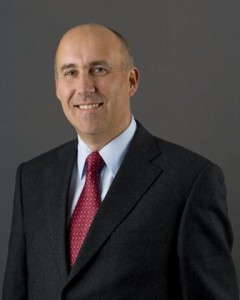Sitting Down With Syngenta

Every company experiences change over time, but perhaps no industry company has experienced more over the last few years than Syngenta, which purchased parts or all of companies like Fafard, Fischer, Goldsmith Seeds and Yoder Brothers over the last two-plus years.
At OFA Short Course earlier this month, Syngenta officials sat down with the media to update us on the state of the company, the markets the company serves and changes in the industry. Two questions many had last October following Syngenta’s purchase of Goldsmith was: Who would run Goldsmith and what impact would the purchase have on Goldsmith’s production.
Well, Joel Goldsmith is still in charge, and Syngenta seed products now operate at Goldsmith’s facility in Gilroy, Calif.
“When our customers heard Syngenta seed products were moving to Gilroy, customers asked, “How did you get them to do that?'” Joel Goldsmith says. “Well, that’s a result of Syngenta listening to us, and that’s refreshing. It was a very pleasant surprise for us.”
Jeff Cox, head of the Syngenta’s lawn and garden business, says company cultures the size of Syngenta’s and Goldsmith’s are too big to mesh. There’s only enough room for one culture–and in this case, Syngenta’s was maintained–but that doesn’t mean Syngenta doesn’t embrace Goldsmith’s.
“We’ve embraced the change of others,” Cox says. “We’ve embraced other businesses. Culture tends to be an outcome of values, and in the case of Syngenta and Goldsmith, our values are very much the same.”
Today, Cox says Syngenta’s lawn and garden pillar is divided into three business segments: flowers, golf and landscape and consumers. Golf and landscape is still the most dominant segment of the pillar, as Syngenta represents about 30 percent of market share in the category in the United States and 35 percent of it in Japan.
The flowers category is growing, though, and Syngenta’s next phase is putting together systems that give growers better results.
“When should the crop be grown? How long will the crop take? That’s our focus,” Cox says. “We want to understand our growers’ needs now but also address problems we will have to address in five or 10 years.”
One area Syngenta believes has the answer to simpler crop growth is water utilization.
“We’re looking to figure out what in plants makes for best water utilization,” Cox says. “Maybe there’s a chance for less watering in the greenhouse. Maybe there’s a chance the consumer has an easier-to-maintain plants. I believe we need education for the consumer. They need to know how to grow plants. As an industry, we need to do more to make us grow.”
Following spring, Cox is upbeat for the industry because consumer spending exceeded the expectations of many. He says the market has grown and different types of consumers have evolved. Hobby gardeners emerged, and there’s potential to develop them into plant experts.
“The resiliency of the industry never ceases to amaze me,” Cox says.
For more information on Syngenta, click here.









